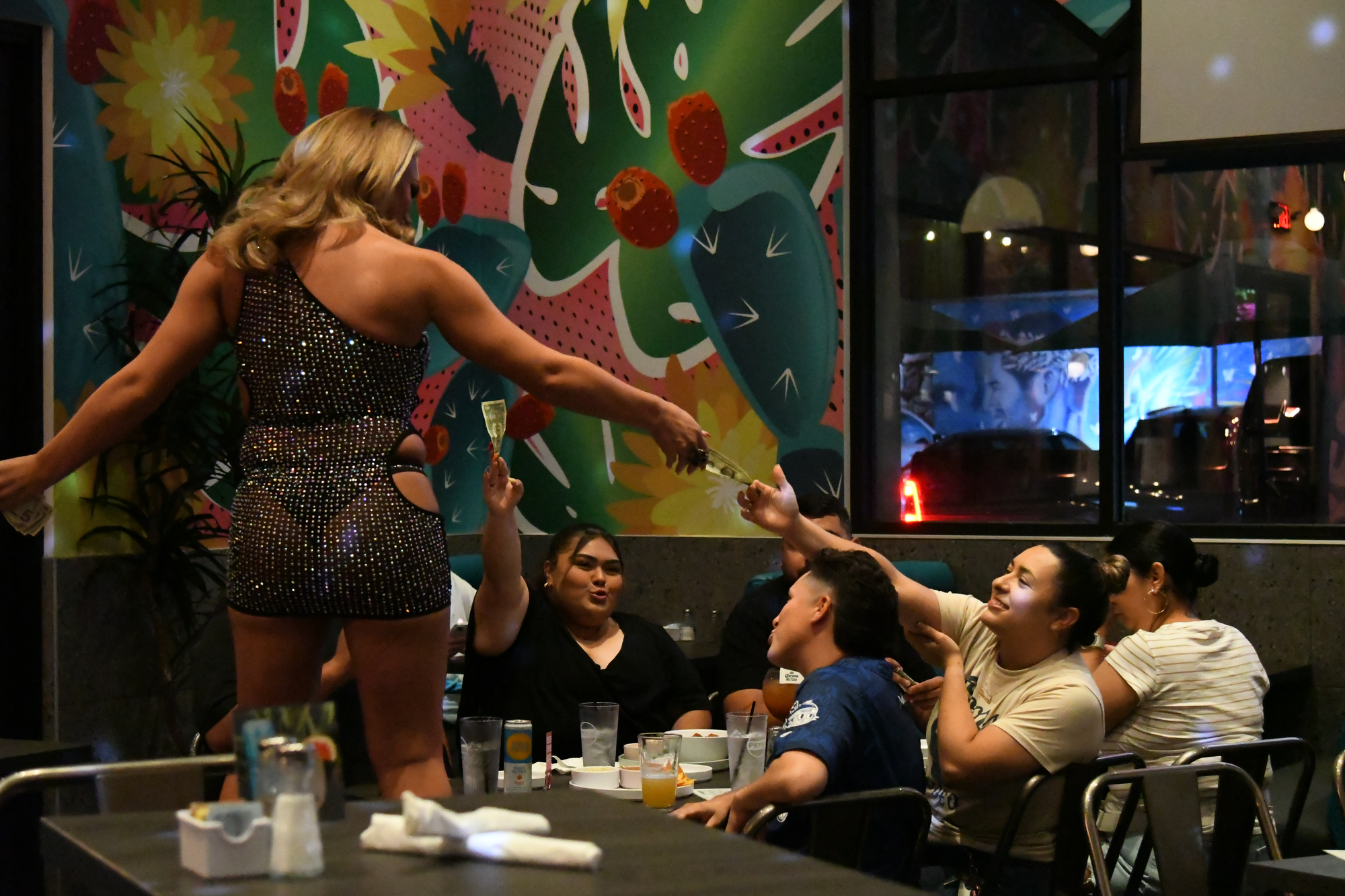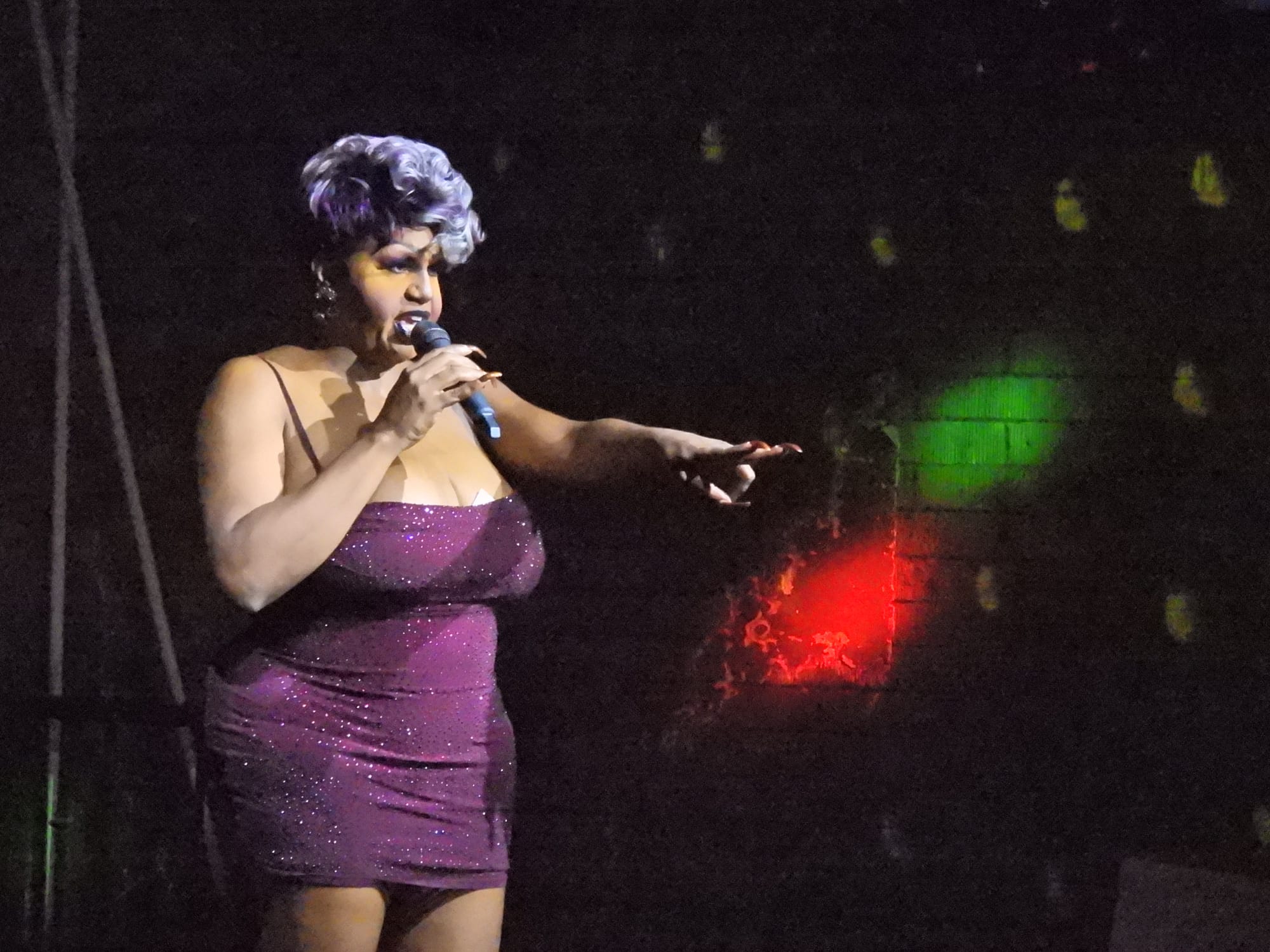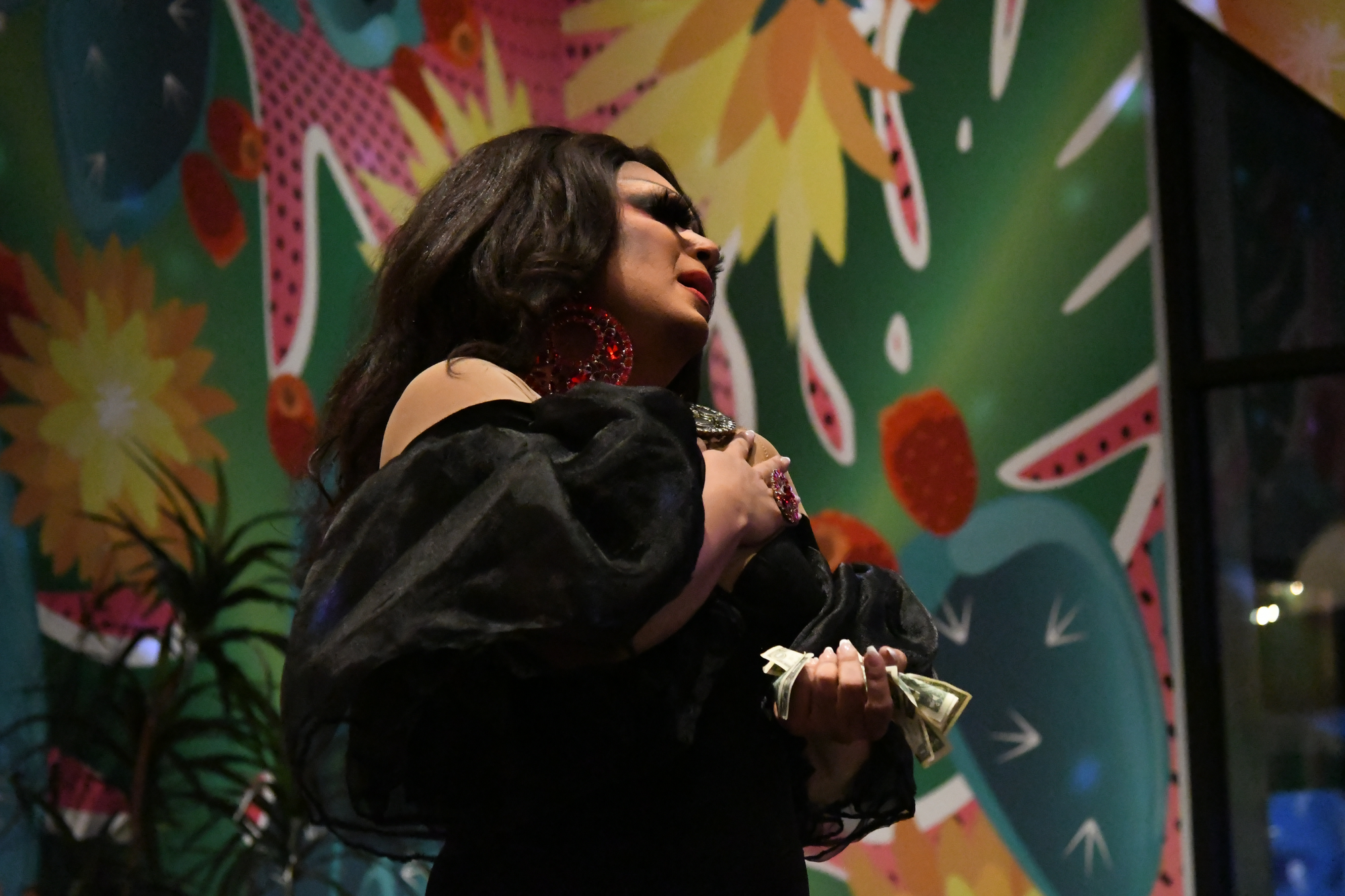Citing Funding Risks, Clinics Cancel Gender-Affirming Treatment for Adults
One adult patient of Planned Parenthood Arizona was told by phone Friday night that the treatment she receives for gender-affirming care was "paused."
An increase in well-attended shows at straight bars and restaurants is welcome for performers who say community spaces are failing to pay up.

Mia Inez Adams has invested 43 years, thousands of dollars and countless hours into her job as a drag performer. It’s enough to allow her to say she hasn’t had what one might consider a “traditional” job since 1997.
Yet even with her outward success, Adams feels she’s not getting paid what she’s worth when she works at gay bars. Adams said she gets paid $200 for her time putting on one of her shows at a gay bar, but ends up investing almost all of it back into the bare necessities to make that performance a reality.
After spending on outfits, snacks for other performers in her show, or materials like mirrors and tables so that her artists can get ready, there’s often nothing left except the tips she gets.
But had she done the shows at a straight venue, she said, none of these issues would be there—at least not in making more than her money back.
She’s not alone in this. LOOKOUT spoke with a handful of performers across the state and learned that while drag continues to be a tentpole of LGBTQ+ culture and identity, its queer spaces have been slow to pay what queens and kings are worth. In response, drag performers are ditching the gay bars and choosing to work during drag brunches or karaoke nights at straight bars. The reasons to perform in nontraditional spaces are based on one thing: they’re the ones paying more.

The pay gap between performers is not affecting everyone equally.
Adams hosts Rising Star, a three-hour weekly competition series every Tuesday at Stacy’s @ Melrose in Phoenix. As both host and performer, she makes $200 before tips.
That’s half of what Trey DeGroodt, a full-time performer who has been working in the Valley since 2018, makes for their shorter show called Trey Cabaret—a monthly solo performance at the same venue.
For their Cirque Du So Trey shows at Kobalt, DeGroodt is guaranteed at least $350. Kobalt also sells tables and charges a cover at the door (for those without a table), where DeGroodt can keep an additional $100 in some instances.
Brandon Slayton and Christopher Tong, both of whom bought Stacy’s @ Melrose from founder Stacy Louis in October 2023, said the pay discrepancy isn’t a matter of bias or appreciation, but purely based on their return on investment.
“We pretty much just kept the same rates these shows were receiving from the original owner,” said Slayton. “But the decision comes down to ROI. Our end goal is to make at least three times [what we invest], though the goal is always more. So, if we’re paying $300, we’d like at least $900 in sales to cover overhead.”
They explained that Adams’ show costs $600 a week to produce, since they don’t charge a cover and pay both a DJ and the weekly winner. DeGroodt’s Cabaret show–which is monthly–is ticketed, and more easily offsets costs.
After speaking with LOOKOUT, Slayton and Tong acknowledge they may need to make all shows ticketed to ensure better returns and higher pay for performers. Promotions and schedules also may need some fine-tuning, they said.
Knomi Flores, a fellow Tucson drag artist who performs as The Vamp Natalia, said there are places that pay far worse and haven’t updated performance rates for more than a decade.
“I used to perform at bars that would expect three sets for $50 to $75,” Flores said. “Those same places are paying the exact same amount as they did 10 years ago. So you can raise prices of everything else, but you’re not going to pay your performers more?”
Flores said because of that, she no longer performs at gay bars.
The pay gap is also felt by performers of color. Adams, a trans black woman, said that the venues she performs at have canceled various drag shows that feature Black and performers of color, and she sees that people who look like her are often the ones being paid less or removed from venues after complaining about pay equity.
LOOKOUT previously reported on how Cruisin’ 7th, a popular drag bar in Phoenix, had a “black list” of drag performers, almost all of whom were Black and brown drag artists.
For artists whose craft is deeply personal, navigating the business side sometimes must be taught, not expected.
In January 2024, Greater Phoenix Equality Chamber’s Executive Director Michele White started the Drag Coalition to support queer-owned businesses and drag performers. White said the coalition is a first of its kind.
“Of the many things that impact the economics of drag, the sheer amount of performers and the difference in experience is major,” White said, adding that businesses have reaped incredible windfalls from their art, and are in a place to support the people at the forefront of the nation’s culture wars: “In the current political climate, the performers are often the ones who get the first run of whatever terrible things are coming our way,” she said. “So if we’re stronger, they’re stronger.”
While businesses say they need to make money off their programming, performers argue that they are also a business that needs to break even. And since gay bars aren’t paying up, they say they’ve been forced into performing at venues they normally wouldn’t want to.

Though no venue can predict how much tip money customers have, queens like Adams report they feel like they are getting what they’re worth at straight “drag brunches,” which have popped up in various areas across Arizona, from conservative cities such as Mesa to more progressive rural towns like Bisbee.
According to average rates shared with LOOKOUT, brunch show performances sometimes receive a budget of at least twice the amount gay bars pay for drag shows.
In Tucson, the venue Playhouse pays almost double what the average gay bar in Southern Arizona pays. And in Phoenix, Stand Up Live and Copper Blues partner with Flip Phone Productions—a company dedicated to producing drag brunches—to pay a minimum of $500 for each show, according to marketing director Alex Souza, which is distributed amongst performers.
But drag artists said that straight venues aren’t ideal performance spots, primarily because of the culture that gay bars bring.
“Are brunches necessarily my norm of what I like to express? Not all the time,” said Elijah Palles, a Phoenix drag king performing under the name Eddie Broadway. “But I like building a new audience that hasn’t seen kings. The audiences are heavily straight women–but the problem is, they’re not coming to our bars to see us.”
Brunches are not the only straight events with healthy payouts; performers can also find gigs at theaters, museums, wedding parties, and even retirement homes. Richard Stevens, a Phoenix drag queen who performs as Barbra Seville, mentioned that one of her more lucrative gigs has been hosting drag bingo at the Arizona Italian Social Club.
“The arts community has been the most hesitant to pay a competitive wage,” Stevens said. “If they’re doing an event to raise money, they don’t call the tent place and ask them to volunteer a tent. But for some reason when it comes down to artists, people are more comfortable asking you to donate your services, though art is sometimes more essential.”
He continued: “If they raise an eyebrow at my quote, I remind them that the guests are gonna talk about my performance more than they talk about caterers or flowers.”

Compensation in the world of drag isn’t cut and dry. At gay bars, managers typically pay hosts, or “showrunners,” who allocate the fee amongst their cast. Adams’s Friday show at Stacy’s, for instance, consists of six cast members for a total of $425.
“Every show is different,” said Jeff Perales, owner of Kobalt, another popular gay bar in Phoenix that hosts popular weekly drag shows. “It varies depending on the event. Some shows are dependent on ticket sales, so we’ll guarantee a minimum amount that the showrunner will get regardless, and then anything over that they’ll keep and distribute at will.”
He said shows that are not ticketed get a fixed budget.
Other venues, like Charlie’s, have scrapped this model entirely; their performers are employees with W-2 tax filings and agree to not perform anywhere else.
Palles, the drag king performer, explained that compensation at The Rock, a gay bar on 7th Ave in Phoenix, is based on reservations booked, whereas its lesbian neighbor bar Boycott sometimes bumps their pay based on door sales.
Neither Charlie’s nor The Rock responded to comment for this story.
For drag artist Daddy Satan, who has been performing across Arizona for two and half years, $50 is about what they can expect to be paid as a cast member in Phoenix. Boycott’s Sunday FunGames is an exception, where they earn $30 to $35 as a cast member before tips.
But in Tucson, they can make much more, sometimes $100 to $150 for a show before tips: “I’ve never made $100 in Phoenix,” they said. “But in Phoenix, people tip more. Tucson seems to value art more. Phoenix feels more turn and burn, more contingent on how anyone can benefit. But if Tucson is able to pay us $100, others should as well.”
LOOKOUT Publications (EIN: 92-3129757) is a federally recognized nonprofit news outlet.
All mailed inquiries can be sent to 221 E. Indianola Ave, Phoenix, AZ 85012.